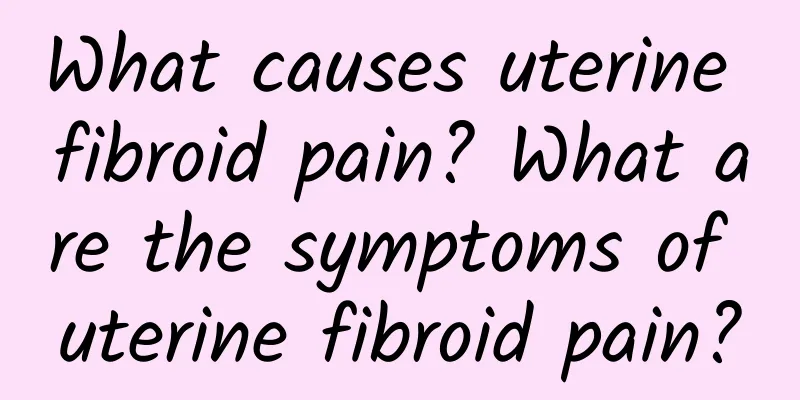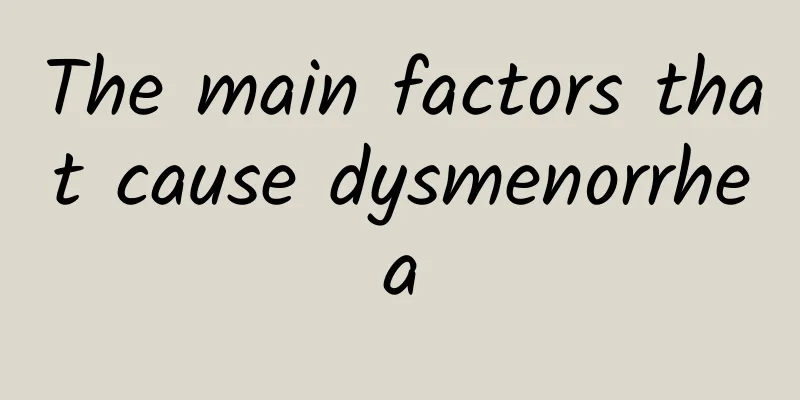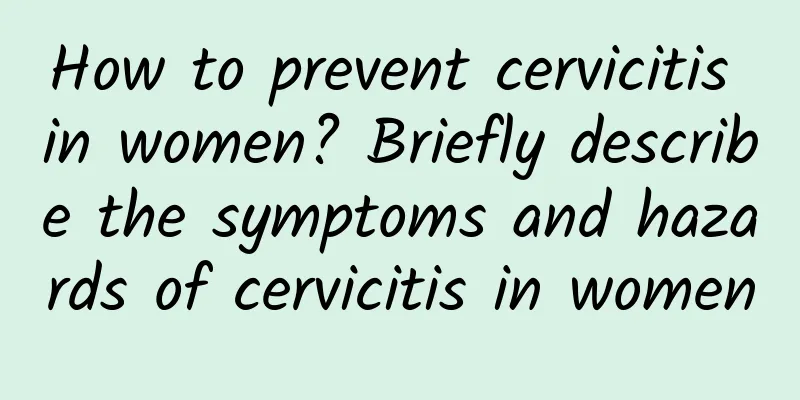What causes uterine fibroid pain? What are the symptoms of uterine fibroid pain?

|
What causes uterine fibroid pain? Uterine fibroids are a common benign tumor in gynecology, which is mainly composed of uterine muscle tissue. Although most uterine fibroids are asymptomatic, some patients may experience pain. So, what causes uterine fibroid pain? First, uterine fibroids will grow and compress surrounding tissues, causing pain. As the uterine fibroid grows, it may compress nearby nerve endings, causing discomfort such as abdominal pain or back pain. This pain is usually paroxysmal and may worsen during menstruation. Secondly, uterine fibroids may also cause insufficient blood supply to the myometrium, leading to muscle hypoxia and pain. Uterine fibroids themselves can affect the blood supply to the endometrium, leading to irregular menstruation or increased bleeding. When uterine fibroids cause insufficient blood supply to the uterine muscles, the muscle tissue will react with pain. Additionally, fibroids can cause structural changes in the uterus, which can cause pain. When a fibroid is located in a certain part of the uterus, it can cause the uterus to deform or twist, which can cause pain. Activities such as exercise or sexual intercourse can cause the uterine muscles to contract, further exacerbating the pain. It should be noted that different cases may produce different pain sensations. Some patients may only feel mild discomfort or dull pain, while for others, the pain may be very severe and even affect their normal life or work. In summary, the causes of uterine fibroid pain mainly include compression of the tumor, insufficient blood supply to the uterine myometrium, and changes in uterine structure. Although pain is one of the common symptoms of uterine fibroids, not all patients will experience this discomfort. If symptoms of uterine fibroid pain occur, it is recommended to seek medical attention in a timely manner and receive treatment according to the doctor's instructions. (Note: This article is for reference only. The specific treatment plan needs to follow the doctor's advice.) References: 1.AmericanSocietyforReproductiveMedicine.(2018).Uterinefibroids.Retrievedfromhttps://www.reproductivefacts.org/faqs/faqsaboutfibroids/ 2. Howard, FM (2003). Uterine fibroids: the commonestindication for hysterectomy in premenopausal women. British Medical Journal, 327 (7417), 721722. 3. Laughlin Tommaso, SK, & Stewart, EA (2017). Uterineleiomyomas(fibroids):overviewofprevalence,clinicalmanifestations,anddiagnosis.https://www.uptodate.com/contents/uterineleiomyomasfibroidsoverviewofprevalenceclinicalmanifestationsanddiagnosis. 4.Walker, CL, & Stewart, EA (2015). Uterinefibroids: theelephantintheroom.Science, 308(5728),15891592. |
>>: What are the symptoms of uterine fibroids in women? The harm of uterine fibroids in women
Recommend
Women should know the classification of vaginitis
Vaginitis is one of the most common gynecological...
What causes dysmenorrhea?
Generally, when it comes to dysmenorrhea, everyon...
Bacterial vaginosis is dangerous during pregnancy
Due to the huge harm caused by bacterial vaginiti...
What medicine is effective for uterine fibroids
Uterine fibroids are benign tumors formed by the ...
What is the cause of ovulation bleeding after uterine curettage?
Ovulation bleeding after uterine curettage may be...
Early symptoms of cervical warts in women
What are the symptoms of cervical warts? Cervical...
Common dangers of cervical hypertrophy
Among gynecological diseases, cervical hypertroph...
Resveratrol helps you lose weight, first understand these 4 concepts
How much body fat do you need to lose to achieve ...
Under what circumstances does uterine fibroids need to be removed? Are uterine fibroids benign tumors?
Uterine fibroids are more common in women of chil...
What are the causes of irregular menstruation in women? There are two reasons for irregular menstruation in women.
Many women's problems There are two main reas...
Is congenital absence of vagina dangerous?
Is congenital absence of vagina harmful? I believ...
Can I have an IUD if I have pelvic effusion?
IUD is a contraceptive measure for women who do n...
Low-calorie snacks that will make you addicted! Homemade almond cheese
Every afternoon, when office workers are exhauste...
Eating too much at the 5 stalls at the teacher appreciation banquet can make you gain nearly 2 kilograms
The topic of teachers not being allowed to attend...
Is it necessary for a girl born without vagina to have an artificial vagina?
With the development of medical technology and pe...









